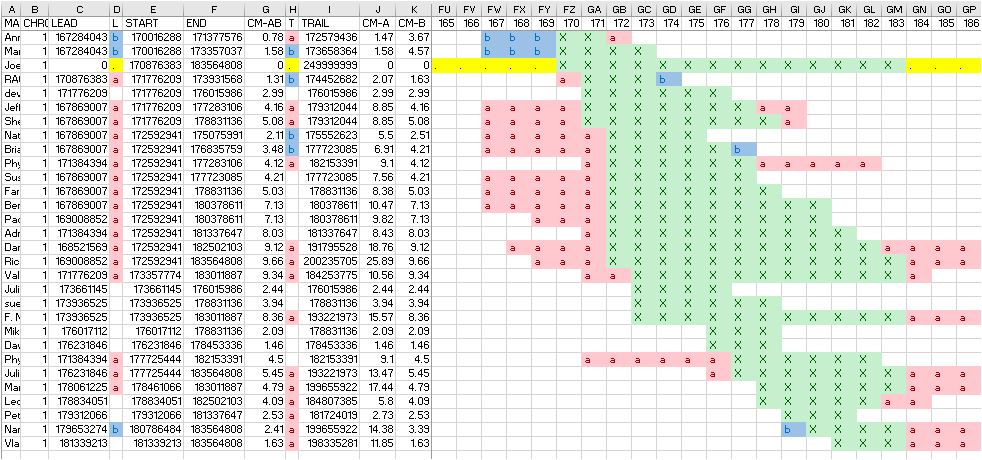With DNA information from FamilyTreeDNA, I have determined trangulation groups. I have chromosome segments of significant size (> 10 cM) over which A (myself) matches B (my known cousin) and A (myself) matches C (some third parties) and I've found out from my cousin that B matches all the C's as well over the entire segment.
This 3-way triangulation is considered extremely reliable and all the third party matches will almost assuredly be related to me and my cousin's MRCA (Most Recent Common Ancestors) and/or some of their ancestors.
I've assigned these matched chromosome segments in my DNA to have originated from my and my cousin's common ancestors.
So now that I have this information, my question is what happens with the people I have found that match me and some of the third parties on one of those segments, but don't match my cousin? Or the people who match my cousin on one of those segments, but don't match me?
Is there an explanation for this?
To make this clearer, here is a concrete example.
The yellow line with the green X's near the top is my uncle's match on Chromosome 1 with my known third cousin, we'll call Joel. The green X's on that line is the segment where my uncle matches Joel.
Note the green X's of the other 29 lines. The green X area are the exact segments where those people match my uncle AND where those people match Joel. (I got Joel's segment match list from him so that I can do this).
(The pink and blue areas are where that person only matches my uncle, or only matches Joel, but that's really not relevant for this question).
But since we have a segment between 170876383 and 183564808 on chromosome 1 for each of the 29 people who match both my uncle and Joel somewhere on that range, then that is three way triangulation (A matches B, B matches C, and C matches A) and that means that all 29 people are pretty well guaranteed to have a common ancestor who is either my uncle and Joel's common ancestor, or an ancestor further back.
I thought that once this Triangulation segment is arrived at, then anyone else who matches either my uncle or Joel anywhere on the green area must also be in this group with a common ancestor.
But then I found these people, each of whom were only in one of the match files:
The people in column B match either my uncle (Harry) or Joel in Column A. But if they are matching to Harry, they are not in Joels match list. And if they are matching to Joel, they are not in Harry's match list. A large part of those matches is over the 170876383 to 183564808 range where Joel and Harry match with green X's for their common ancestor.
Each of those people are in only one match list, either Harry's or Joel's. Some of the segment lengths are quite significant, and it's unlikely the 13.18 and 12.81 cM segments are not IBD.
So I am confused as to how this can be and I'm looking for possible explanations.

